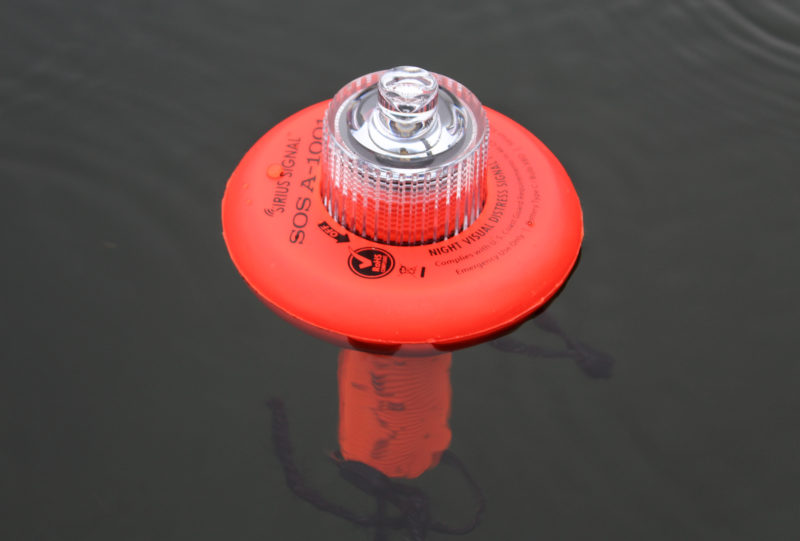 SBM photos and video
SBM photos and videoA foam ring keeps the light floating upright.
The older I get, the more safety conscious I become. Every year I add to the emergency kit I bring on my small-boat adventures, but as yet I’ve never carried pyrotechnic emergency flares. My reluctance stems from wariness: I’m averse to the explosions that launch aerial flares and the slag that drips from handheld flares. I don’t want to chance burning a hole in dry bags or sails, further endangering me in an emergency, or risk swamping or capsize by holding a flare far over the gunwale. Flares are also bad news from financial and environmental perspectives. A basic set costs about $30 and expires in around three years, providing the flares don’t get damp or damaged, a likely occurrence on a small boat. Once their expiration date has passed, flares no longer meet Coast Guard requirements and have to be replaced and eventually disposed as a hazardous material. All that aside, do they work? According to many reports, including an article from the safety-oriented BoatUS, flares, lasting from a few seconds to a few minutes, aren’t actually very visible.
So what’s a small-boat sailor to do? The new battery-powered SOS Distress Light from Weems & Plath may be worth considering as an addition your kit. Introduced to the market in January of this year, the light is currently the only one of its type to meet Coast Guard requirements. There are many emergency strobe lights with simple on/off flashing, but they don’t qualify as substitutes for flares.
The SOS Distress Light is modest in size, with solid construction. Measuring approximately 8″ tall and 4 1/4″ at its widest point, it can stow easily in a small boat. Made of orange plastic, it has anchors for two shock-cord straps that I find useful for securing the light to a spar or an oar handle. A dense foam ring protects the unit and allows it to float upright should it be dropped in the water. A clear plastic lens projects light upward in a focused beam and outward horizontally through 360 degrees. The device is powered by three C-cell batteries (not included). You rotate the lens clockwise to turn the light on, counterclockwise to turn it off. Continuing to turn the lens counterclockwise removes it to provide access to the batteries. Two O-rings make a watertight seal between the lens and the battery housing.
The light is produced by a single LED dome about 1/16″ in diameter, and the circuitry connected to it produces an SOS pattern—three short flashes, three long flashes, three short flashes—timed to meet Coast Guard specifications. The light quality is crisp and clear, but not blinding. The packaging claims the light “runs 6 hours at peak intensity, total illumination 60 hours.” I left the unit on for 24 hours straight, and it did not dim noticeably. Even after 50 hours straight, the unit still provided enough light to be useful.
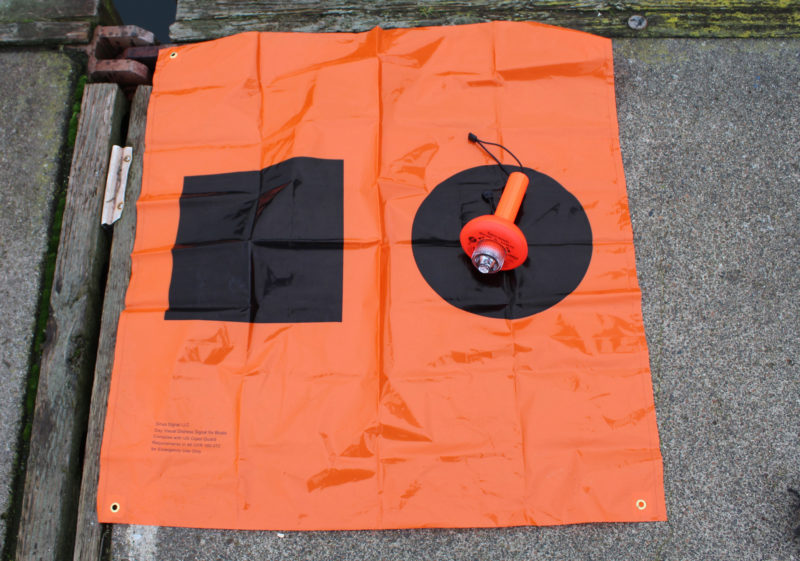
The SOS Distress Light comes with an internationally recognized day distress signal flag.
I initially thought the light seemed too small to have much effect at a distance, but when I took it outside at night, it was surprisingly visible. According to the manufacturer, the light can be seen for up to 10 nautical miles. It’s easiest to spot any signal light in near total darkness and when there are no other lights in its vicinity. I found the SOS Distress Light to be clearly visible at a half mile, the longest range I could find where I wouldn’t create a false alarm. While the device is intended for nighttime or low-visibility conditions, it is somewhat visible by day.
While the light is designed to float upright with its lens above the water, it can be obscured by waves at short distances, and by the curvature of the Earth at long distances. Raising it attached to the handle of an oar can extend visibility, but because the light is projected in a horizontal plane, the light should be kept as close as possible to perpendicular to be most effective.
Even though we small-boat sailors are not often far offshore, a small craft can be hard to see, especially in rough water. In an emergency during daylight hours, the SOS Distress Light, in conjunction with a VHF radio or an EPIRB, could be very useful in guiding rescue crews once they’ve arrived at the general location. The light projected from the top of the lens can then be aimed at potential rescuers. Having a nighttime distress signal that can flash a universally recognized distress signal for hours can have a distinct advantage over relying on the brief lives of incendiary flares.
As you start to review your emergency supplies for the season ahead, consider adding or replacing those flares with an SOS Distress Light. It’s a good long-term investment in your safety, meets Coast Guard requirements, and is easy on the pocketbook and the environment.![]()
Bruce Bateau sails and rows traditional boats with a modern twist in Portland, Oregon. His stories and adventures can be found at his web site, Terrapin Tales.
The SOS Distress Light comes with a plastic 34″ x 36″ daytime distress signal flag (a black ball and square on an orange background) and retails for $99.95. It is manufactured in the USA by Weems & Plath and available from the manufacturer, The WoodenBoat Store, and many marine chandleries.
UPDATE: 12/16/2020 Weems & Plath no longer lists the SOS Distress Light on its website and the WoodenBoat Store no longer has stock and doesn’t know if they’ll be resupplied. There is a nearly identical device under the Sirius Signal brand for $89.95. For a newer and more compact SOS distress light from ACR, see our review in the December 2020 issue.
If you have an interesting story to tell about your adventures with a small wooden boat, please email us a brief outline and a few photos.
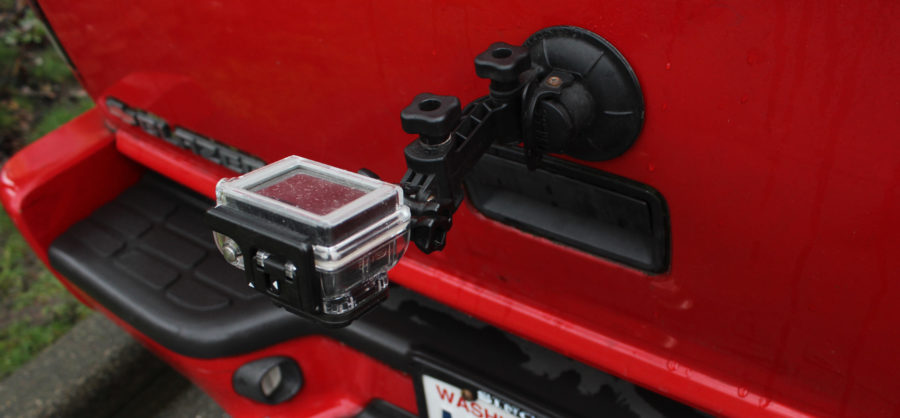
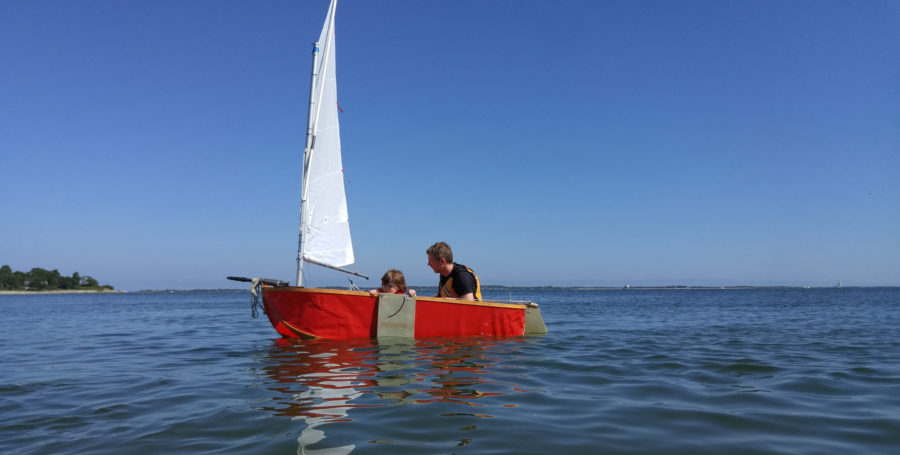
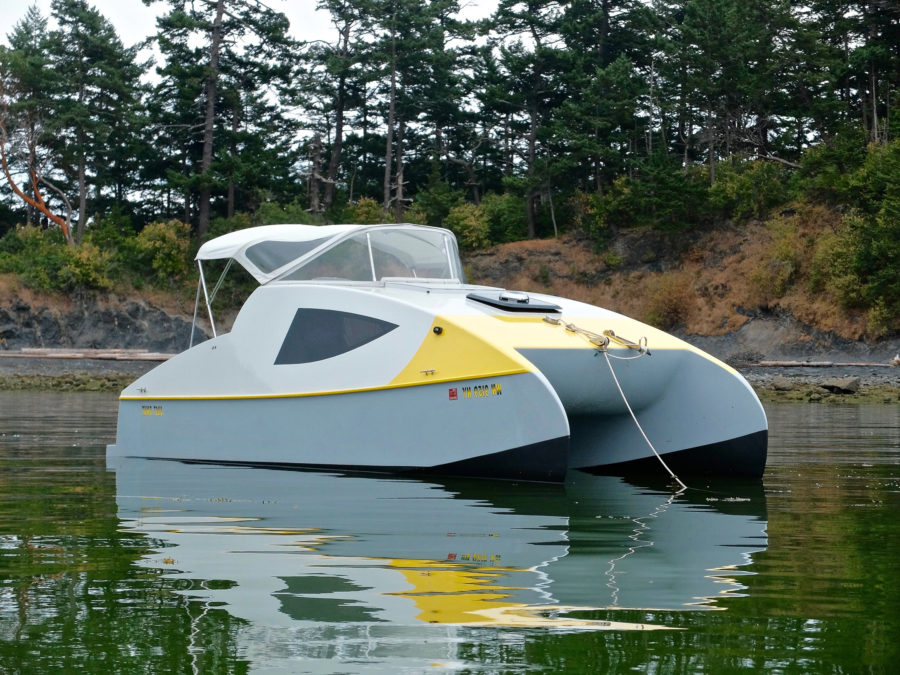

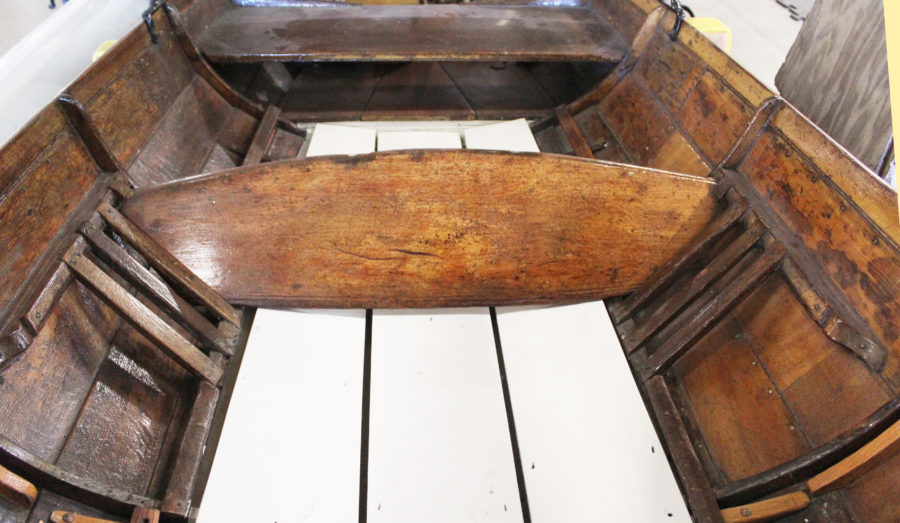
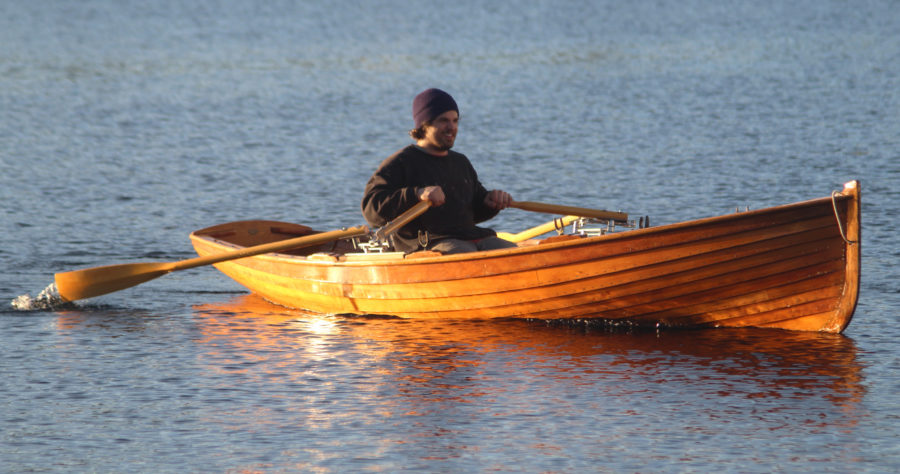
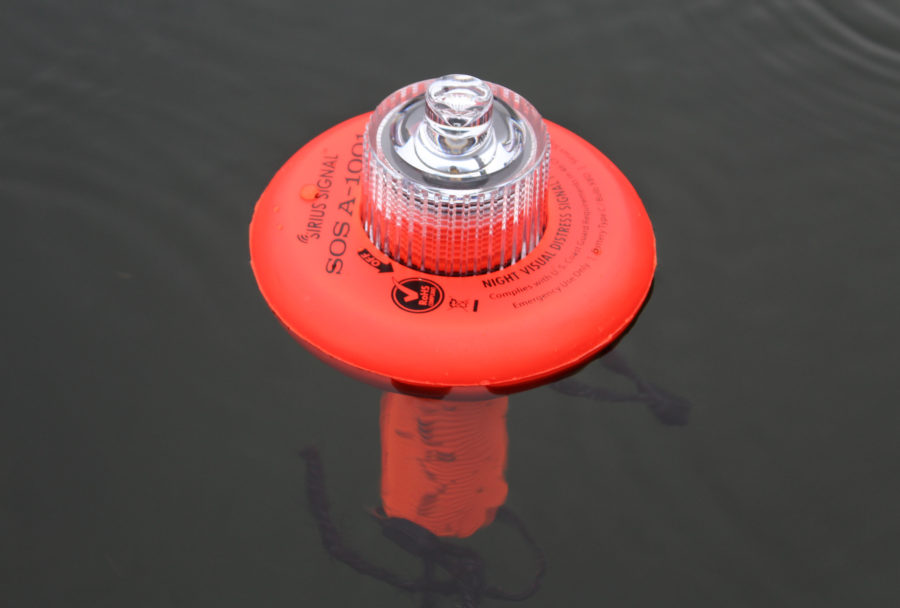

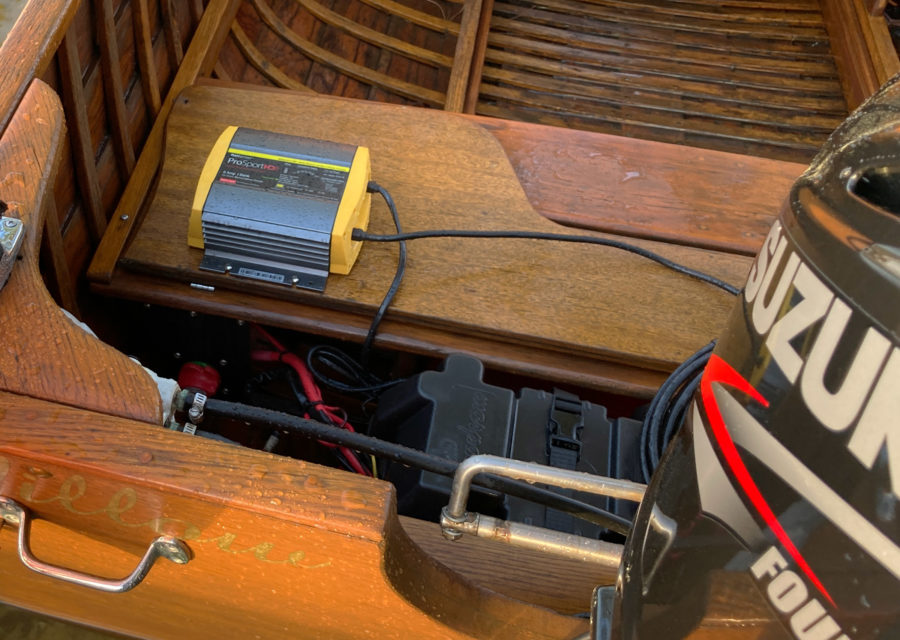
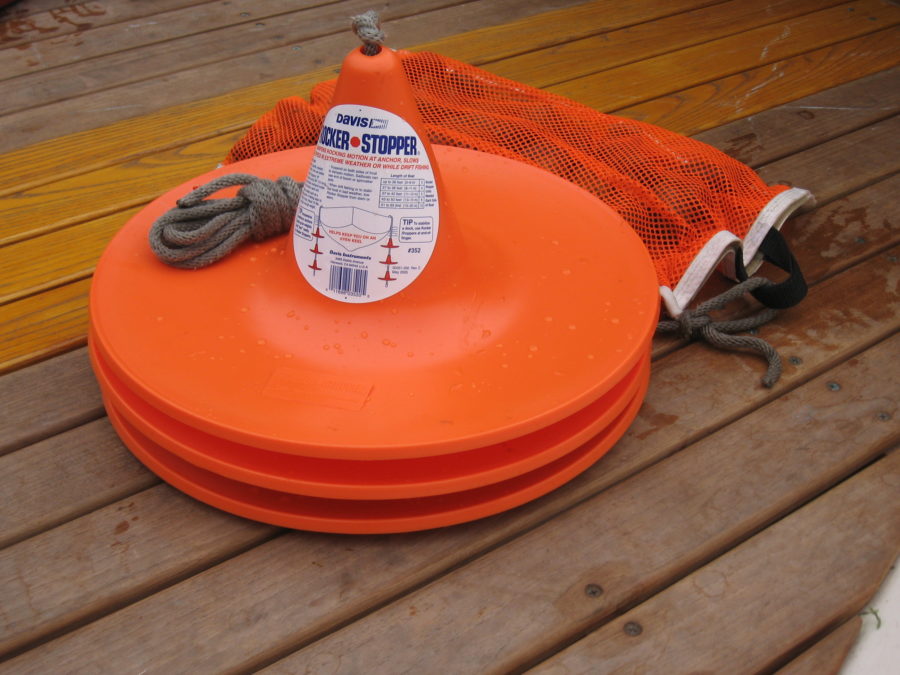
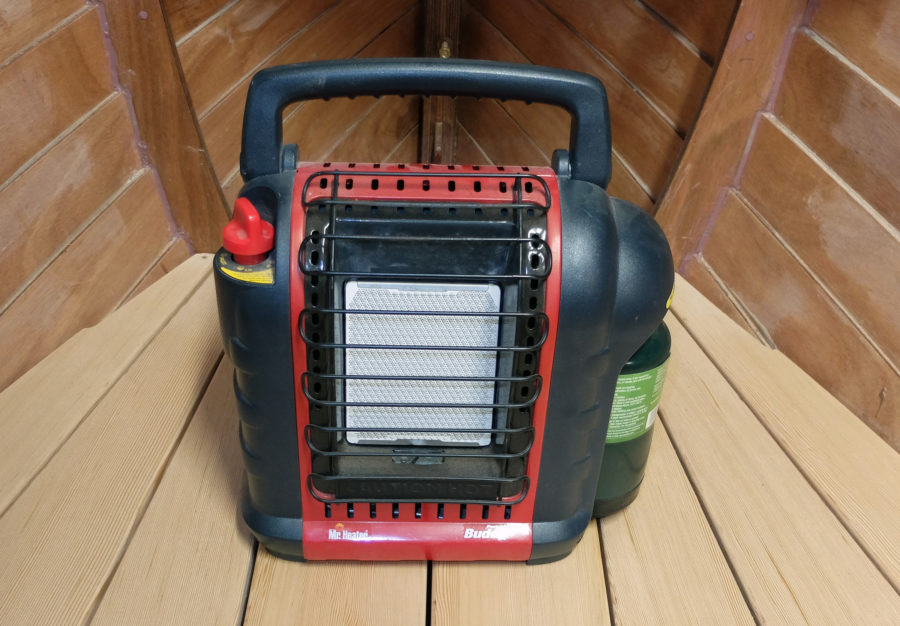
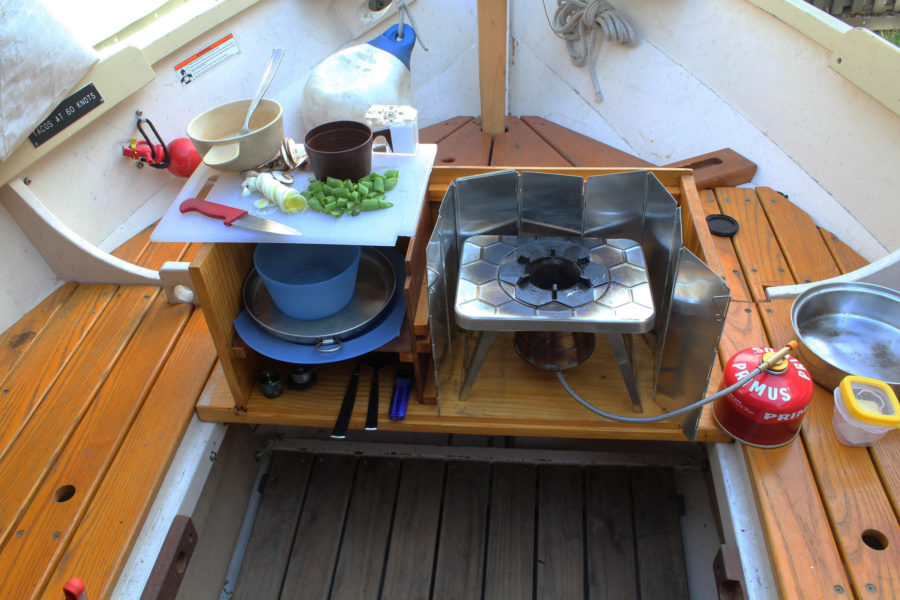
Join The Conversation
We welcome your comments about this article. If you’d like to include a photo or a video with your comment, please email the file or link.